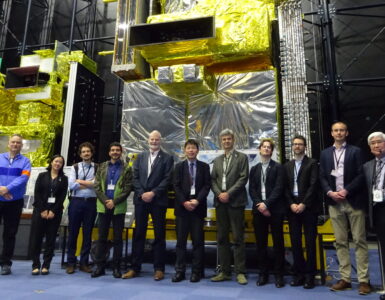CEOS is committing significant resources in support of the Paris Agreement, and its Global Stocktake process. We already have in place a Greenhouse Gas (GHG) Roadmap developed under the joint CEOS-CGMS Working Group on Climate. The 2020 CEOS Plenary recognised the need for coordination efforts in relation to the land sector emissions which are crucial to the Global Stocktake process and agreed to the development of a CEOS AFOLU (Agriculture, Forestry and Other Land Uses) Roadmap, led by the Forest and Biomass team within our Land Surface Imaging Virtual Constellation. The Co-Leads are: Osamu Ochiai (JAXA), Ben Poulter (NASA), and Frank Martin Seifert (ESA), where Ben takes on the Lead Author role for the Roadmap.
In 2021, the effort focused on support for the development of the CEOS GST Portal to provide a public interface to our efforts and support countries keen to explore EO datasets for their national reporting. The AFOLU Roadmap team was also involved in the Synthesis Report on “The Role of Systematic Earth Observations in the Global Stocktake”, submitted for the first Technical Assessment in the Global Stocktake process.
After two years of entirely virtual operation, the AFOLU Roadmap team was delighted to meet in person thanks to an invitation from the ESA SIT 37 Chair team, in cooperation with the GCOS Terrestrial Observations Panel for Climate (TOPC), to host an AFOLU workshop at ESA ESRIN in early September 2022. The day reaffirmed the vital importance of a CEOS strategy to ensure that public EO programmes are fit for purpose in meeting society’s needs for information to implement successfully the Paris Agreement. The objectives of the Roadmap were confirmed as:
- To provide a framework for long-term (~ 15+ years) coordination of CEOS agency observing programmes in support of the needs of society for AFOLU-related information, with a particular focus on the needs and ambition cycle of the Global Stocktake of the UNFCCC Paris Agreement.
- To serve as a guiding vision for long-term space agency coordination around AFOLU. The Roadmap will characterise the needs, the services and applications required; the products and observing systems that can support; and explain the need to plan for ground segment, space segment and services.
- Provide an effective means for communicating our intentions to society, UNFCCC, national inventory community etc.
- Address basic observation continuity and the necessary agency coordination to achieve it.
The team agreed to work to a 2035+ horizon including to forecast the information needs EO satellites will have to support across the three dimensions of: global assessments and syntheses; national climate policy and actions; and GHG inventories. The discussion imagined a 2035+ fully coupled observation and modelling system for all sectors as a guiding ambition for the overall CEOS roadmap. This vision would be coordinated with in-situ greenhouse-gas observing systems like those proposed by the World Meteorological Organisation and the Integrated Global Greenhouse Gas Information System (IG3IS). The CEOS-GCOS workshop heard eloquent appeals for space agencies to step up to this significant challenge, and the importance of working with modelling groups to understand exactly the need for future observations, in all aspects of the emissions evaluation process. And for all agencies with active investments and plans in the supporting observations to be active participants as we plan together the future technologies and systems that will be necessary to respond to the needs of the countries of the world to achieve better management of mitigation and adaptation activities for climate change and raise their ambition.
Osamu Ochiai (JAXA), Ben Poulter (NASA), and Frank Martin Seifert (ESA)








